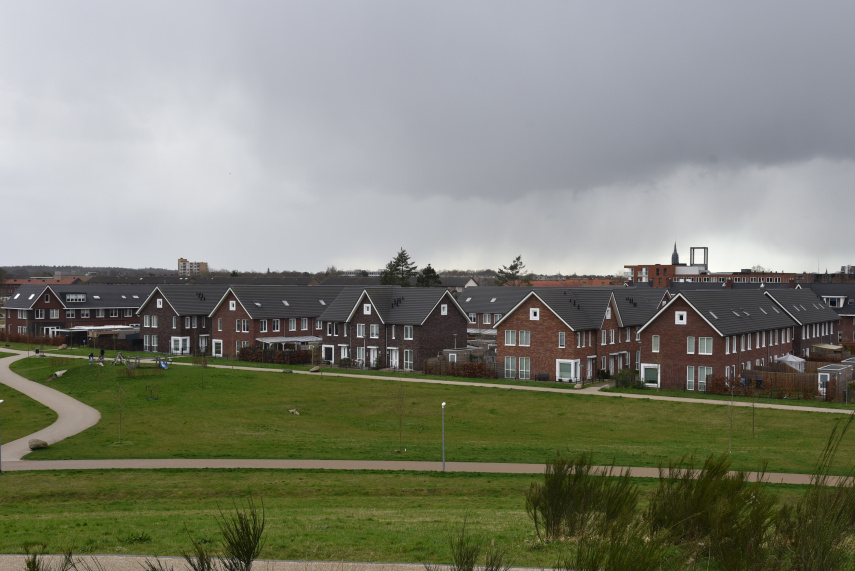
Land for Housing - What Europe can teach us
David Stewart
The Scottish Land Commission has today published its report Housing Land Allocation, Assembly and Delivery: Lessons from Europe – the sixth and final report in the series leading up to the Review of Housing for Land and Development, planned for early 2021. Senior Policy Officer David Stewart explains the report’s importance, explores its main findings, and shares how they can contribute to thinking on land reform and the creation of better places.
The pandemic has sharpened thinking on housing in Scotland. Most people have spent more time at home, with many houses also functioning as offices and classrooms. We are now thinking more deeply about our homes and the spaces around them. Are they suitable for homeworking? Do they provide the access to green space so important to our physical and mental wellbeing?
Another, perhaps surprising, effect of Covid-19 has been a rise in house prices post-lockdown. With Covid-related job losses disproportionately impacting younger people, there is a danger of the inter-generational gap between housing ‘haves’ and ‘have nots’ increasing further.
As many have observed, however, if we are to recover from the pandemic it is essential to build back better. Previous work by the Commission on land and housebuilding found that the market alone cannot achieve public interest outcomes such as delivering more homes and making new homes more affordable. A recent report by our partners CaCHE, Delivering More Homes and Better Places, found that there are common factors that are underpin the creation of better places. These include:
• Local authority leadership in assembling land for development and in initiating and shaping the project
• Re-using existing land so that new homes are close to employment opportunities and public transport
• Early and in-depth community engagement to create better places and generate support for development
• A clear master plan with a focus on quality greenspace
• A patient capital approach with a long- term aim to create financial and social value.
While the authors were clear on the common features of quality places, they noted that – in Scotland – such developments are the exception rather than the norm. With the pandemic highlighting the need to deliver better places, and National Records of Scotland predicting a 16% growth in households by 2041, there is an urgent need to understand how land reform can help deliver more homes, creating places that people want to live at a price that they can afford.
Today’s findings, the next in our series, centre on land for housing in Europe. The research team, from the Universities of Glasgow and Liverpool, looked to Europe for lessons and ideas, focusing on countries with a strong reputation for delivering enough homes to meet need and demand and for creating high-quality places: the Netherlands, Germany and Switzerland. The research focused on the role of land allocation and land assembly in delivering quality homes and places.
Our aim was to understand the differences between the way land is brought forward for housing and development in these countries from Scotland, and to provide recommendations on how land reform can help deliver the right homes in the right places. This was achieved by providing an overview of how the planning system delivers land for housing in each country, plus a case study illustrating the results that are delivered in practice. The Commission and researchers deliberately chose to look at everyday places rather than exemplars: our purpose was to learn from approaches that are widely replicable and can be delivered in most places.
Key Findings
• The pro-active role of the public sector in assembling land for development and shaping the development is a major feature of all of the case studies
• European local authorities exercise a greater degree of control over development than in Scotland
• Success is equally down to the private and public sectors – the public sector assembles land for development and master-plans sites, but works hand-in-hand with the private sector which is responsible for project viability and for delivery
• The pro-active role of the public sector reduces risk for the private sector. This in turn can allow developers to sell more homes at lower values, and allows more of the land value created by housing to deliver quality green and public spaces.
The three case studies shared a number of common factors:
• All involved the re-use of brownfield sites – something Scotland can learn from as we work to address our legacy of vacant land
• Masterplanning and the use of design competitions was essential to delivering quality places
• Each case study area had a focus on quality public and green space and favoured active travel over car use.
There are a number of approaches to land assembly used in each of the countries studied worthy of further consideration in Scotland. Highlights include:
• An active land policy – where the local authority acquires land in advance of need, allowing it to develop land use plans in order to influence the quality of new places
• Pre-emption rights – where public bodies are offered land or property before it goes on the open market, enhancing their role in the development of new homes and places
• Mandatory land re-adjustment – private land rights are temporarily transferred to a public development agency. The agency then assembles the site and installs infrastructure before returning sites to their owners having deducted the cost of infrastructure. This prevents delays caused by multiple ownership and disagreement over who pays for infrastructure.
Today’s research will form an integral part of the Commission’s Review of Land for Housing and Development, which will be published in the new year. Of particular interest is the role that public authorities play in land assembly and in initiating developments, and the way they work closely with the private sector to reduce risk and create quality places. With the Scottish Government developing a route map for Housing to 2040 which seeks bold, innovative and imaginative proposals, we believe that this research and the forthcoming review will provide constructive ideas to inform the development of housing policy in Scotland.
Housing Land Allocation, Assembly and Delivery - Lessons from Europe
